Moto G4 and G4 Plus Review
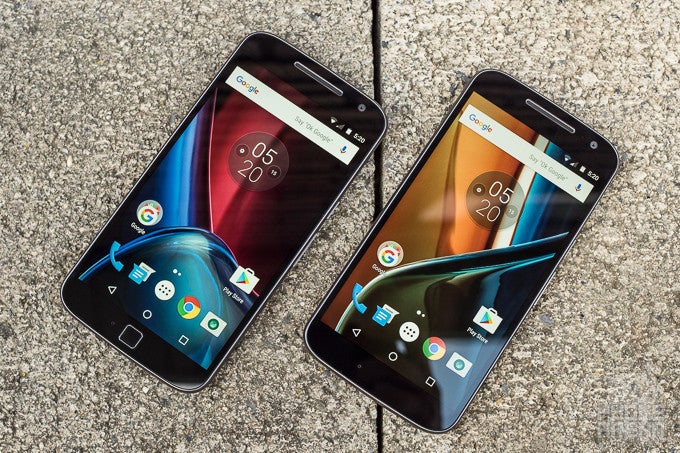
Moto G4 Plus (left) and Moto G4 (right)
Update: You can now read our Moto G4 Play review!
Introduction
Three years ago, Motorola gave smartphone shoppers an affordable new budget option in the form of the first-gen Moto G. In the years since, we've seen the Moto G really grow up, in more ways than one. Not only has the Moto G grown from a 4.5-incher to its current 5.5-inch screen size, but it's also become a more and more capable handset, and one delivering an ever-growing number of configuration options.
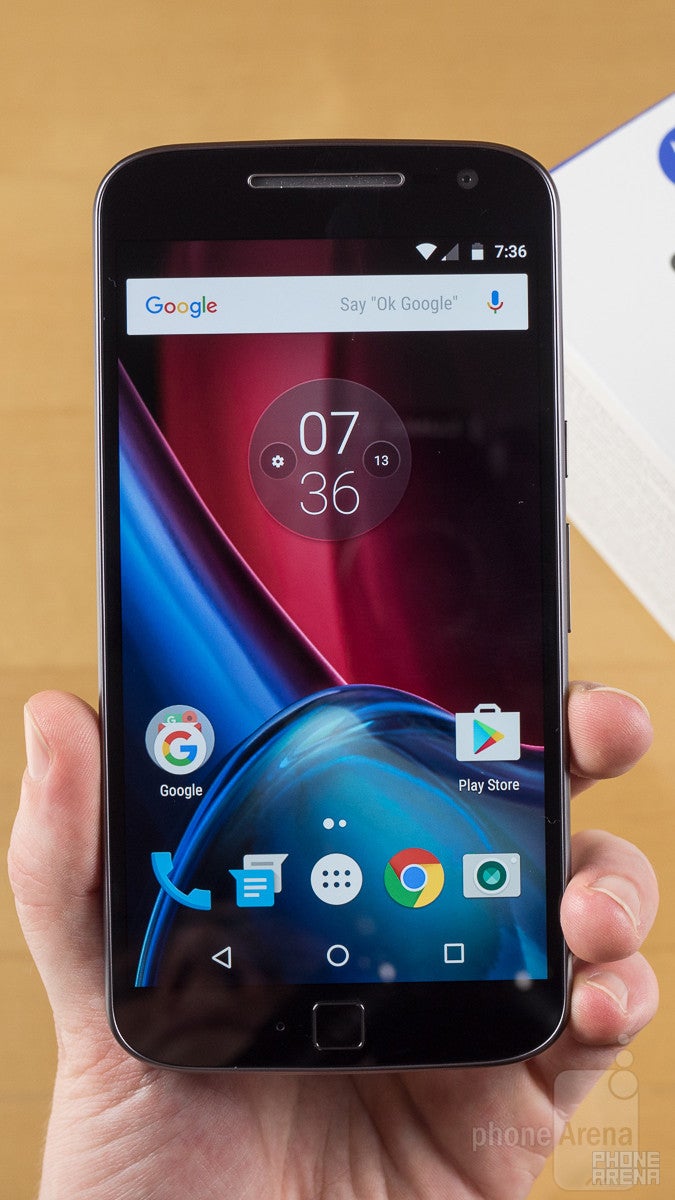
Moto G4 Plus
We've been spending some time with two of the three new Moto G4 models, the standard Moto G4 itself and the higher-end Moto G4 Plus, in the interest of finding out. Is this family still a smart choice for smartphone shoppers looking to keep costs low? Is it worth splurging on the Plus model's upgrades? Read on to find out.
In the box:
- Moto G4 (Plus)
- Micro USB cable
- TurboPower charging adapter
- Introductory guide
- Safety notice
Design
Another year, another even bigger Moto G
The Moto G4 and Moto G4 Plus are two phones cut from the same cloth, with nearly identical appearance. Both phones represent a significant departure from last year's Moto G design, dropping the speaker underneath the display and instead moving it up top to the earpiece, and revamping the rear dimple/camera layout: while the iconic Motorola dimple is back, this time it's a part of the removable back panel itself, and lives separate from the camera assembly above it.
That removable back panel may allow for some after-market Moto G4 customization, but the real action takes place before you even get the phone out of its box. Motorola's Moto Maker online tool allows shoppers to personalize their handsets with options for alternate front bezel colors, camera accents, and yes – even the back panel (which you can also get engraved with a short message). It would have been nice for those back panels to feature a range of material options in addition to the all colors currently available, but for a budget phone the variety available isn't bad at all.
While the Moto G4 is far from alone in the 5.5-inch space, there's something about Motorola's design that makes these handsets feel slightly larger than most – and if we were forced to try and pin that down, the big, round curves around the handsets' edge may have a lot to do with that. Despite their size, these phones feel seriously light, and we almost wish they came in a little more substantial than they do with their shared 155g mass.
Motorola's clear that neither G4 is waterproof nor intended to be submerged, but the phones still get a water-repellant nano-coating to help keep them functional through the occasional light splash – just don't go nuts.
Display
Big, bright, and the highest-res for the series to date
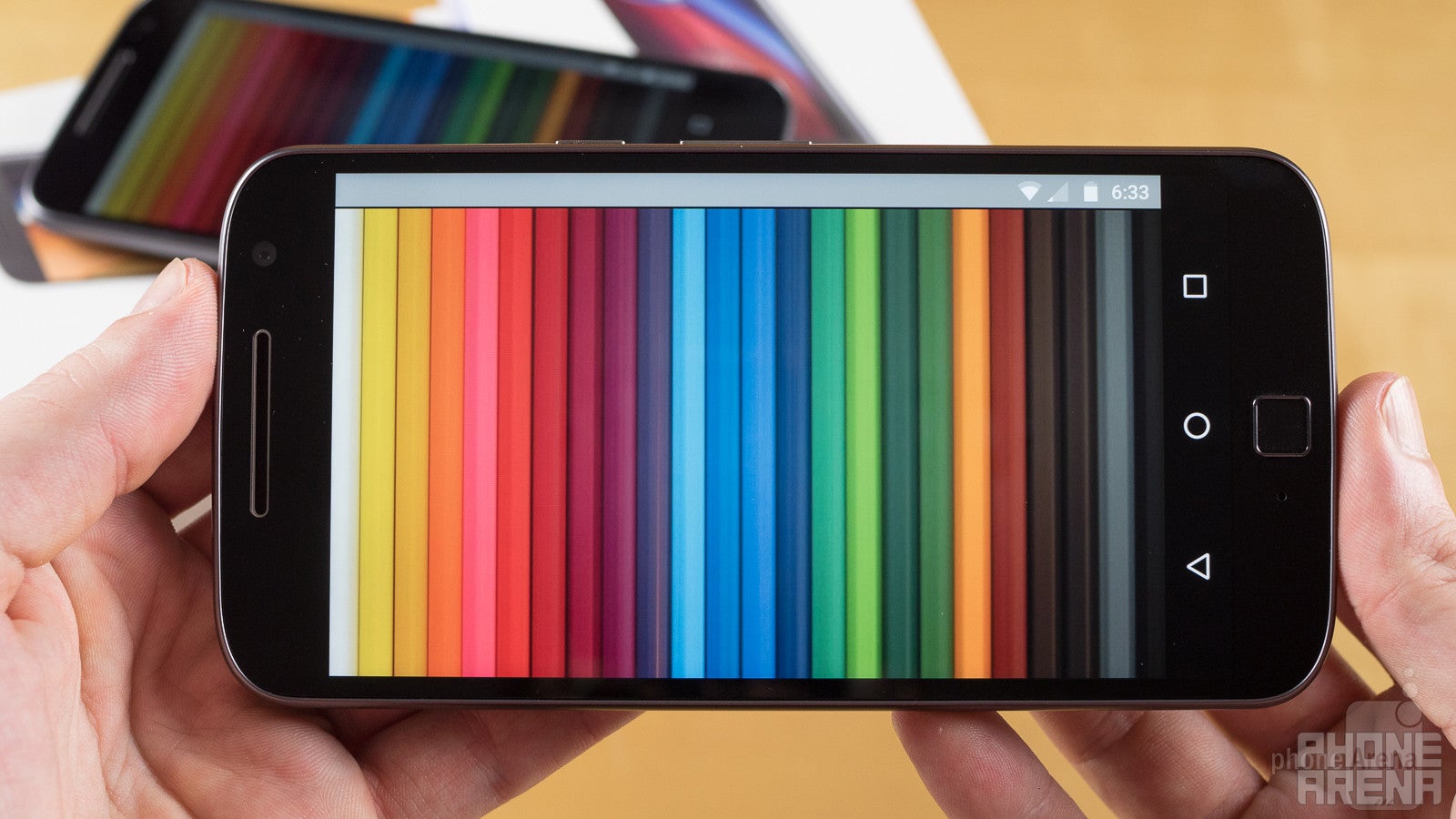
Moto G4 Plus
As we mentioned earlier, the Moto G has soundly shaken its old reputation as a pint-sized phone, and it seems like each year it arrives just a little bit larger (indicative of market trends, perhaps?). While last year that brought us a phone with a 5.0-inch 720p display, this year we get an upgrade in terms of both size and resolution, with both the G4 and G4 Plus scoring a 5.5-inch 1080 x 1920 panel.
While such a screen is nothing fancy in this day and age, it's still nice to see those specs on a budget handset, and the display Motorola uses is a pretty high-quality one: brightness is among the highest we've seen from any smartphone in a while, and viewing angles are excellent. One oddity we did note is that the screens on each of these units appeared to have a slightly different color temperature to them; with the same hardware, and configured the same in software, that shouldn’t be. Perhaps it's just a small (in)consistency issue, but both panels did look quite nice.
With all this screen real estate to use, we only wish the phone came configured to take better advantage of it all. The default five-icon-wide launcher appeared a bit huge to our eyes, but that's largely a matter of taste; some users will absolutely dig a phablet whose screen feels like a blown-up version of a smaller phone.
Both handsets support the display of at-a-glance notifications when the phone's otherwise asleep, with a variety of options for setting both the hours during which this mode is engaged, and what specific content it includes.
Interface and Functionality
Minimal and clean, just the way we like it
The days of Motoblur are but a distant memory, and Motorola's long been steering its Android-UI ship to follow in the wake of pure-Android Nexus devices. That's once again true with the Moto G4 series, and the interface on these phones is within an arm's length of a plain-vanilla Android interface.
Of course, even with most of the interface as close to stock as it can be, Motorola still finds room to work in its own custom improvements, and some big ones there come in the form of its gesture support.
Users can automatically silence calls by picking up their handsets, leave the phone face-down to engage do-not-disturb mode, or quickly launch the camera app with a double-twist – and when you're missing a hardware shutter button to act as its own shortcut, that's a great help. We also see the return of the chop-twice-for-flashlight gesture, making it a breeze to illuminate a dark room – even if it's so dark that you're fumbling to find the buttons on your phone.
Motorola may not be doing a ton to make the interface on the Moto G4 series stand out, but as far as we're concerned that's good thing: the software doesn't try and over-think things, and instead gives us a familiar, streamlined UI with a handful of well-executed flourishes.
Processor and Memory
A variety of options is good, but we're still missing the ones that matter most
Both the Moto G4 and Moto G4 Plus run the same silicon, with each phone powered by a Qualcomm Snapdragon 617 octa-core processor. That's on the higher side of the manufacturer's mid-range chips, and the choice to use it here seems like an obvious match for a phone positioned like the Moto G4 is in Motorola's larger lineup.
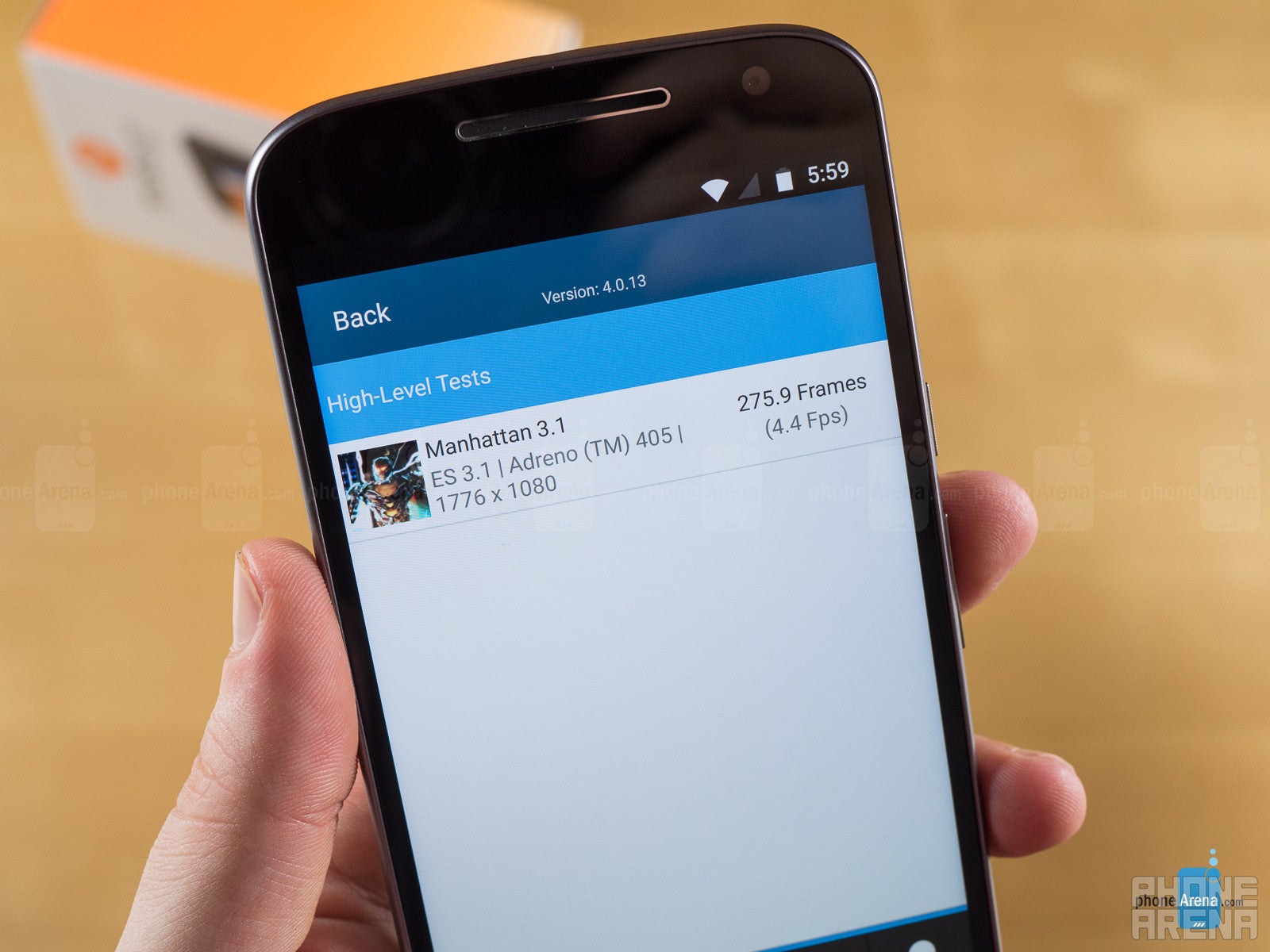
No matter which Moto G4 you buy, the phone comes equipped with 2GB of RAM – storage options are 16GB or 32GB for the G4. And while the 16GB Moto G4 Plus is also a 2GB model, the 64GB G4 Plus bumps that up to a robust 4GB.
In day-to-day operation, though, that extra 2GB didn't appear to make a big difference. Plenty of the same performance issues remained, but benchmark evaluation did suggest the G4 Plus had a minor advantage in many tests. We wouldn't necessarily recommending the 64GB G4 Plus just for its extra RAM, but the $100 premium it fetches is arguably worth it for the extra storage, higher-res camera, and fingerprint scanner alone – consider the RAM a bonus.
Connectivity
Can't we all just get along – oh, we can!
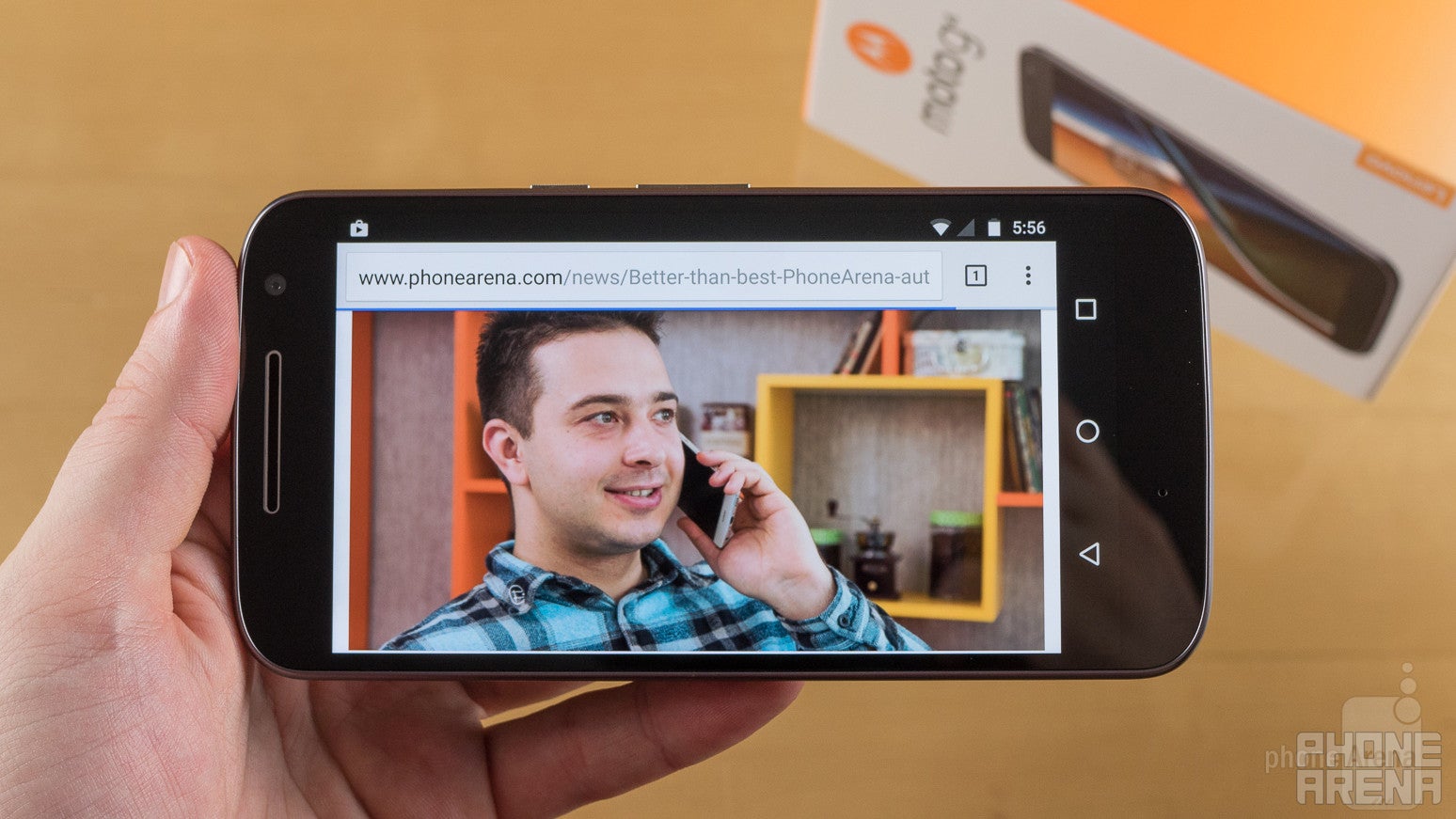
Why can't more phones be as compatible as the Moto G4 series? There's just one radio version of each model being sold in the US, and you can buy the phone unlocked to work on Verizon, AT&T, T-Mobile, Sprint – even U.S. Cellular. It's a little odd that Motorola went with a micro-SIM slot considering the rise of nano-SIM elsewhere, but an adapter is included if you've got one of the smaller cards. And if you're carrying multiple SIMs, switching carriers is as easy as popping off the phone's back and sliding in a new card.
Other manufacturers, take note: THIS is the way you do broad network support.
As far as other radios go, we've got support for Wi-Fi 802.11 a/b/g/n and Bluetooth 4.2 LE. Sadly, there's no NFC support, and while we can understand why a budget phone might skip it, it's unfortunate it didn't arrive alongside the fingerprint scanner in the Moto G4 Plus.
Camera
A tale of two sensors – but is the upgrade worth it?
If there's going to be one decision that drives shoppers to pick the G4 Plus over the G4, it's likely to be the higher-res 16MP camera with laser-assist and phase-detect auto-focus for the former. The G4, meanwhile, gets a 13MP sensor. Both share an ƒ/2.0 aperture, and while the images the two cameras produce are noticeably different, it's difficult to but a finger on one as the outright superior sensor.
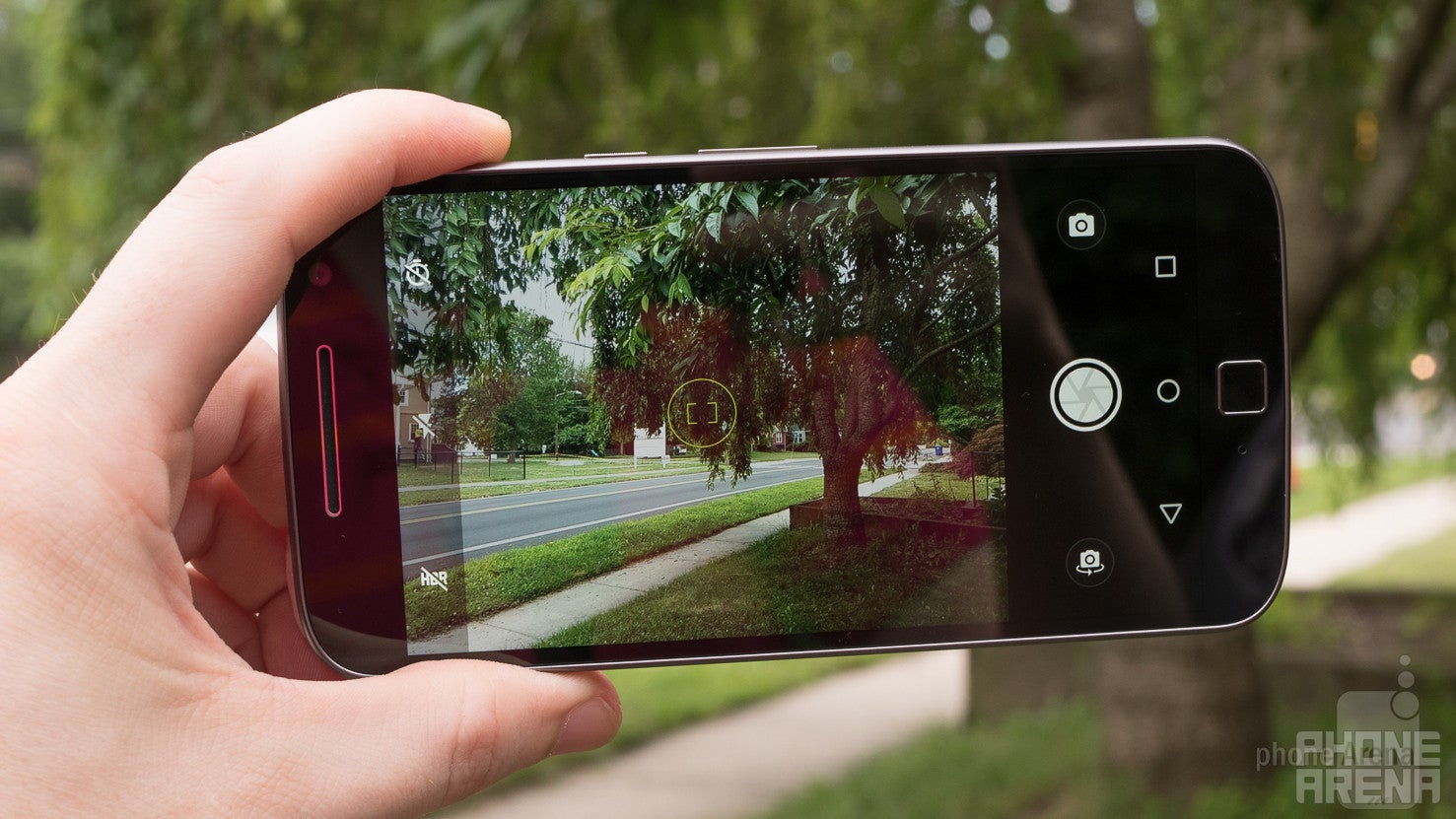
Image quality
Motorola's 16MP upgrade delivers on offering a slight edge
Shooting at full-res, there's a certain crispness to the G4's 13MP shots occasionally absent from the G4 Plus's 16MP pics, but start zooming and cropping and the latter camera begins proving its worth. We shot a lot of side-by-side pics with both phones, and it's remarkably hard to guess which image came from which camera; sometimes the lowly G4's camera seems to produce the superior output, while other times the upgrades Motorola gave the G4 Plus truly shine through.
Color temperature also seemed to vary between pics, and while in some cases images from the G4 tended to look a little cooler than the G4 Plus's warmer shots, other test photos revealed the situation reversing. Perhaps the shared software makes it more difficult for one phone's camera to soundly pull ahead of the other, but it really is a bit surprising how varied these comparisons worked out to be.
One area where the G4 Plus has a clear leg up is in low-light performance, where it tended to produce brighter pics even without the phone's flash.
Both phones share the same 5MP selfie cam, and it produces some nice, well-saturated shots. As expected, low-light performance is abysmal, but a screen-illuminating faux flash helps a bit – though its benefit is largely constrained to up-close, centered subjects, with the photo's edges fading into blotches of color noise.
Video recording
With no big promises, it's hard to let users down
Both these G4 models top-out at 1080p video – no 4K to be found in mid-range territory. And going head-to-head, each produces some solid full-HD output, though the G4 Plus tends to navigate through rapidly shifting focal points a bit better.
However, when dialing things down to 720p (whether you're trying to save storage space or whatnot), the G4's quality suddenly takes a nose dive, with video that looks over-enhanced in the name of high contrast – while losing a lot of subtle detail in the process.
We also noticed recording lag with both cameras, cutting off the beginning of clips, so make sure you hit that record button well in advance of whatever action you're trying to film.
Multimedia
A surprisingly satisfying front-facing speaker
Going all-in on a phone's earpiece for sound output isn't exactly the most popular choice for a smartphone, and especially with the Moto G lineup, it's easy to look back longingly on the days when Motorola saw fit to still give us a pair of stereo front-mounted speakers.
But while the Moto G4 and Moto G4 Plus may not be equipped to deliver rich stereo sound, they're still capable of some satisfying, balanced audio output. Bass tones are warm and come through without overwhelming the treble, and while volume levels are pretty much on par for what we get from a lot of phones these days, we still wish they were just a little louder.
Motorola may be moving away from headphone jacks with its flagship lineup, but the stalwart port is here in full force for the Moto G4 series. Output isn't quite as powerful as we get from some phones, though, so you might want to stick to smaller, less demanding headsets for optimal enjoyment.
Call Quality
Motorola knows radios, and it shows
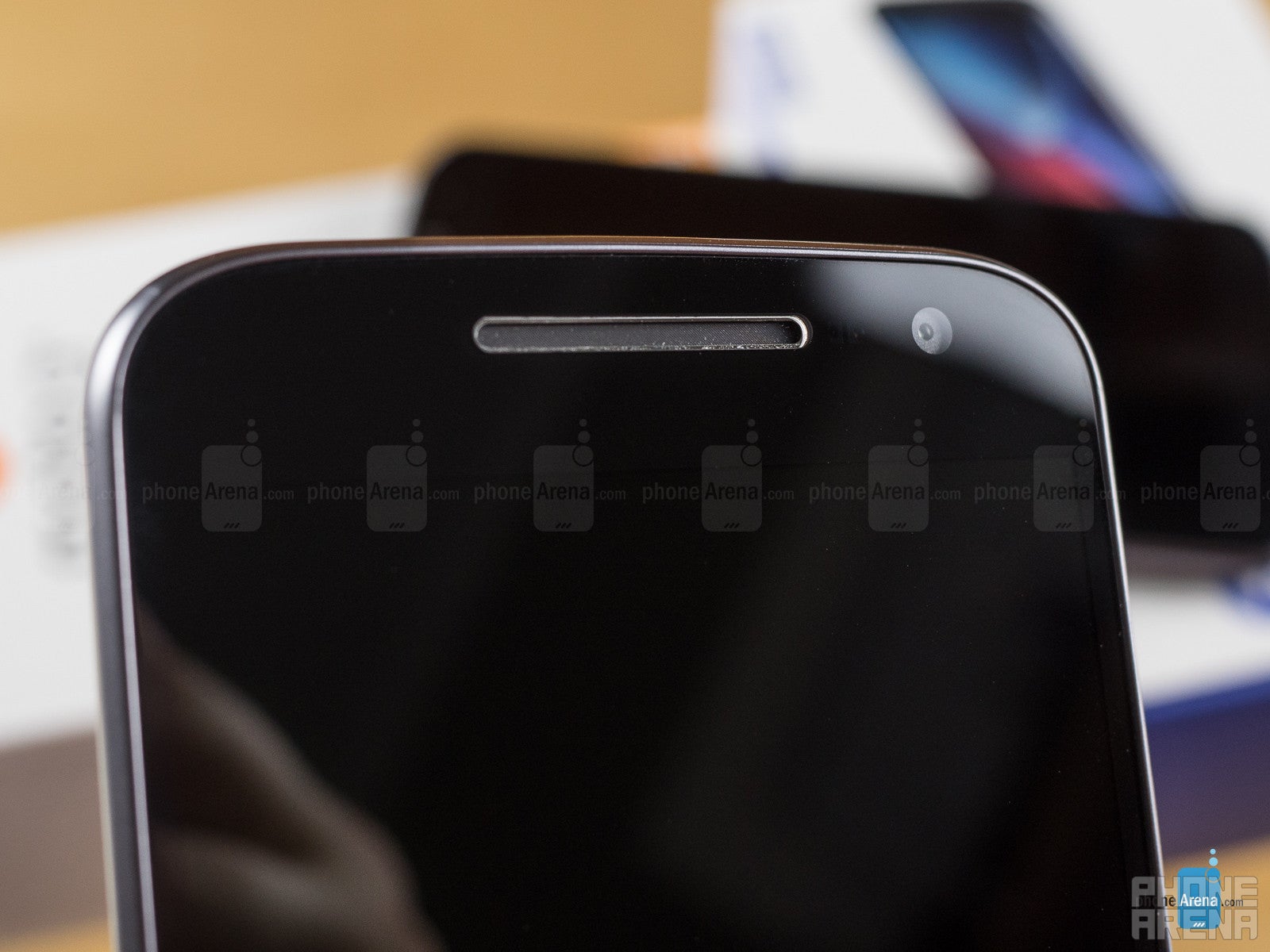
Battery Life
Flagship-level (and sometimes besting) endurance
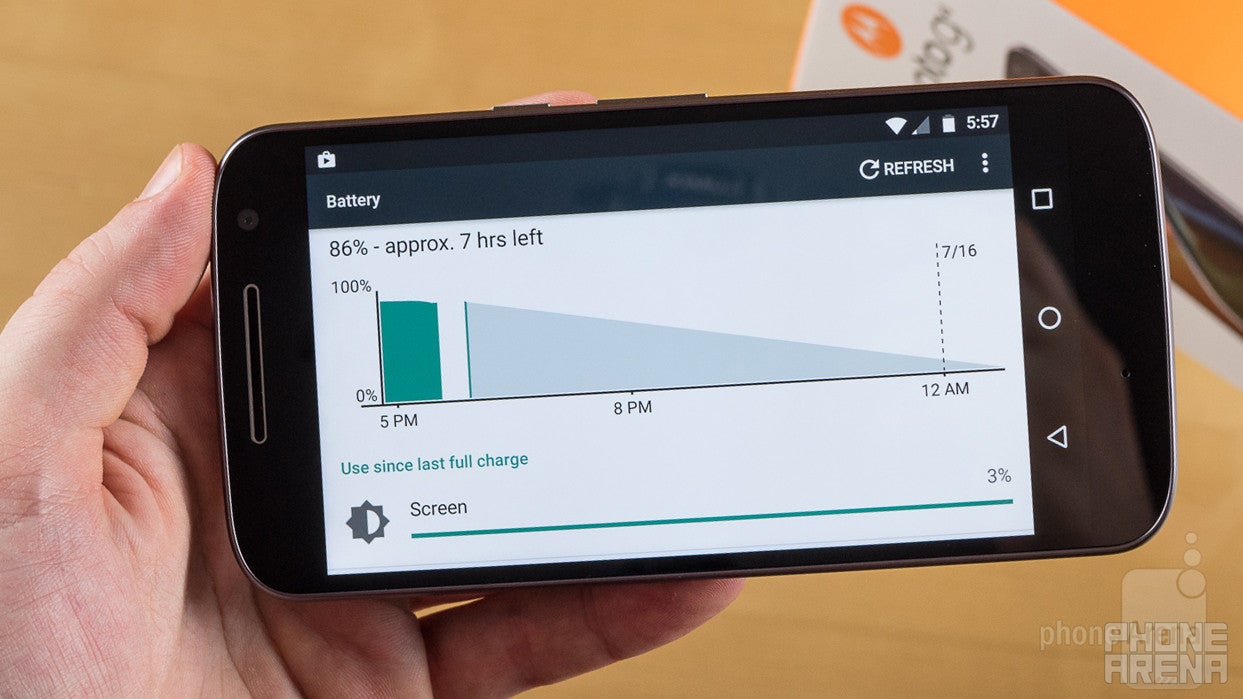
Moto G4
No matter whether you go with the G4 or the Plus version, you're getting a phone with a good-sized 3,000mAh battery. And even with the move to a 5.5-inch screen this year, that's still ample power to get you through a day of heavy operation without running out of charge.
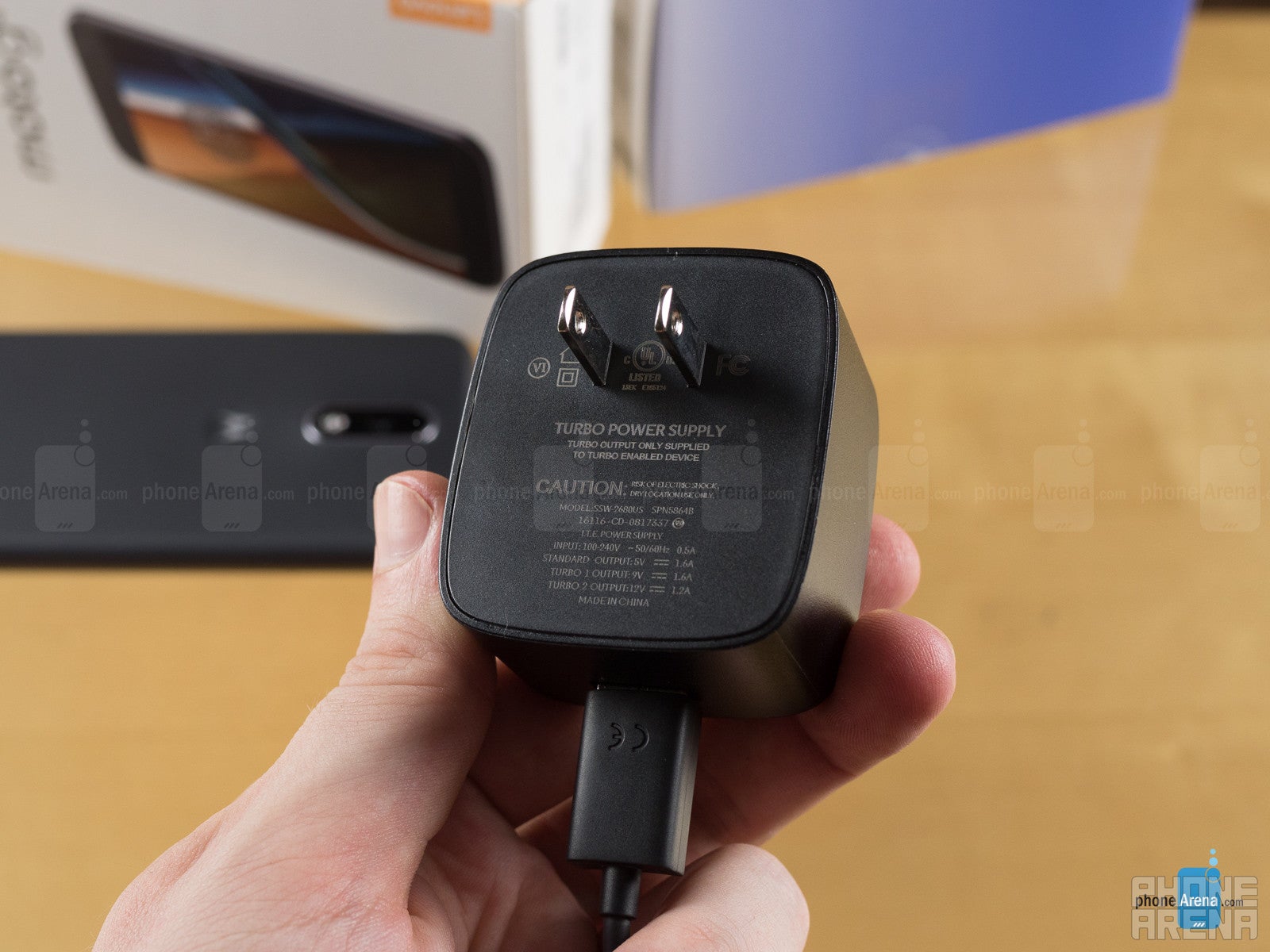
Recharging is acceptably fast, and with the help of the included TurboPower adapters, both phones were able to fully restore their batteries in under two hours. The main benefit to TurboPower, though, is getting a few hours worth of operation after just a short 15-minute charge, and it has less of an impact as you get further and further along in the charging process.
Conclusion
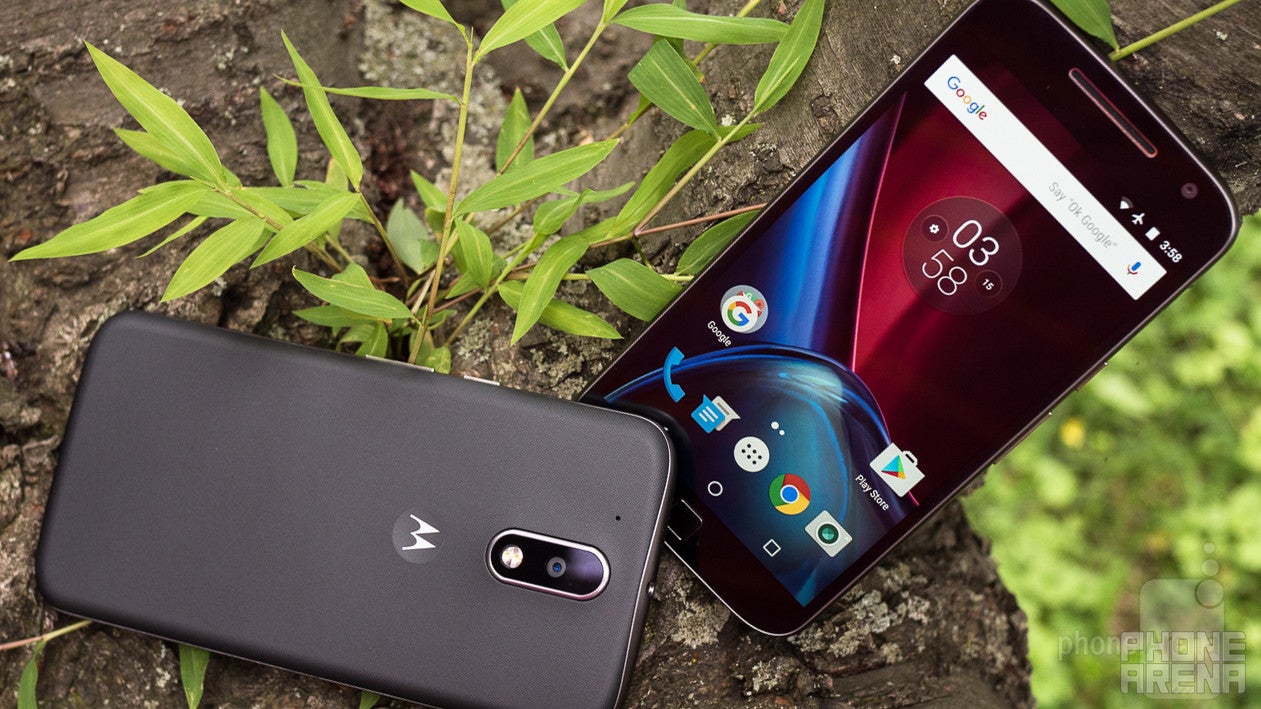
Moto G4 (left) and Moto G4 Plus (right)
Both the Moto G4 and Moto G4 Plus are some well-done mid-rangers, marrying performance that should be adequate for casual users with some very attractive pricing.
But a lot of companies give us well-executed phones; are the new Moto G4s anything special? Well, that's sadly to say a bit of a “no.” The Moto Gs in general have been experiencing a sort of drift over the years, and while they're still a cheap alternative to Motorola's flagships, they no longer feel like they're doing much that's unique to stand out in the mid-ranger space.
That said, we really appreciate the variety of storage and memory options, especially for the low, low prices Motorola is charging for those upgrades. Two hundred dollars is a sweet starting point (even if it is a little pricier than last year's Moto G) and fifty bucks extra for a higher-res camera and fingerprint scanner isn't a bad premium – moving further still to four times the storage and double the RAM is an even easier $50 upgrade beyond that.
And while each of those upgrades seems like a sensible decision, the Moto G starts looking a little different as we push up to the $300 level. Here the phone starts competing not just with other lower mid-rangers, but affordably priced value propositions; is it worth spending another $100 and moving to something like the OnePlus 3? That Snapdragon 617 may be alright for many uses, but it's also a troubling bottleneck on a phone that lets you upgrade so many other components.
Maybe if the Moto G4 Plus let us graduate to a speedier chip, or if things like the fingerprint scanner were standard even on the entry-level $200 G4, the phones would compare slightly more favorably to the rest of the Android pack. Right now they're still both pretty good phones – they just exist in a world where some better-equipped models are just around the corner.
They're both good handsets worth picking up if they happen to deliver exactly what you're looking for. But with so many options out there, it's worth your while to consider all the alternatives before sinking the cash on this year's Moto G.
Software version of the review unit: Android 6.0.1; Build Number: MPJ24.139-48/49

Update: You can now read our Moto G4 Play review!
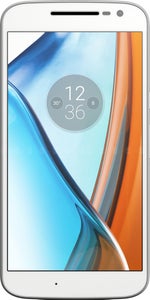
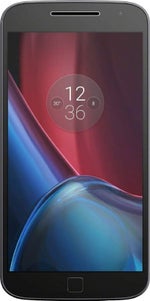
























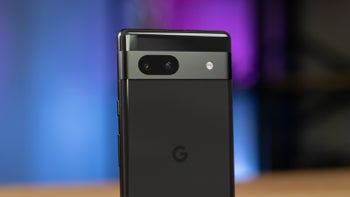
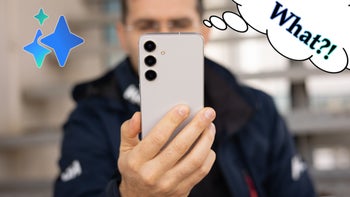
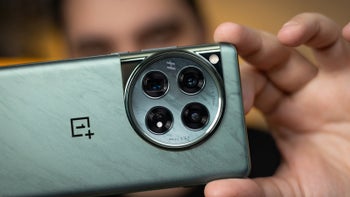



Things that are NOT allowed: